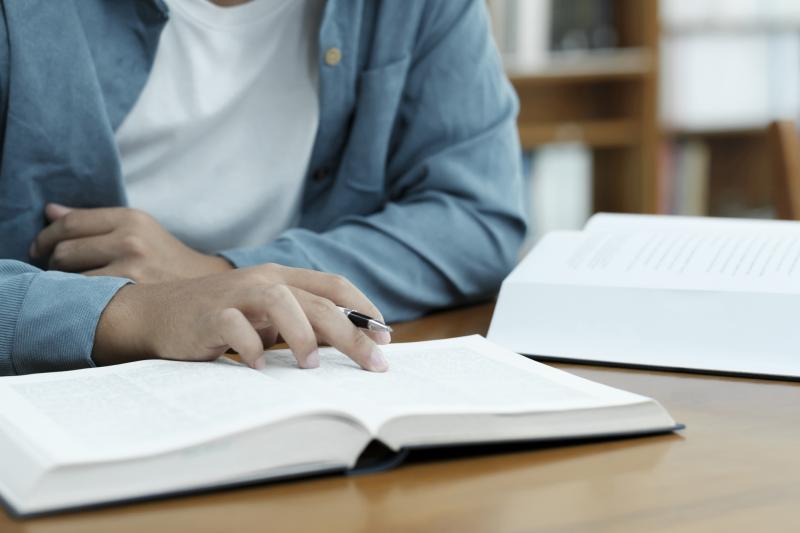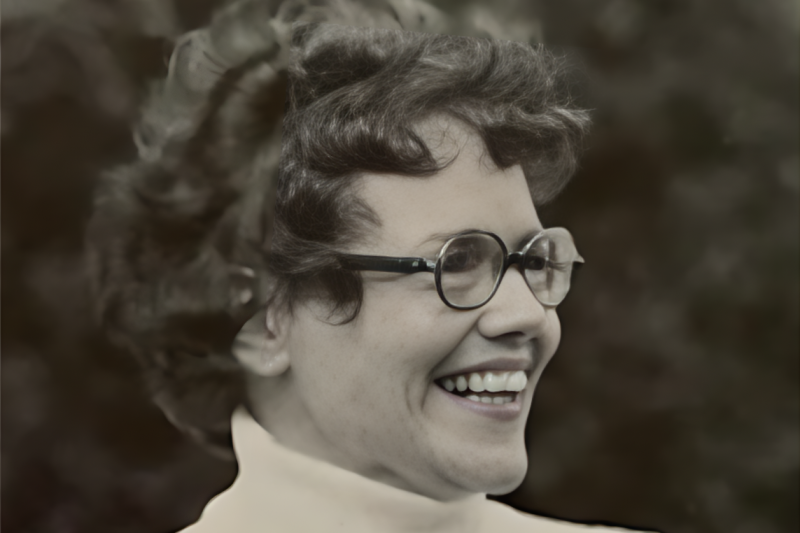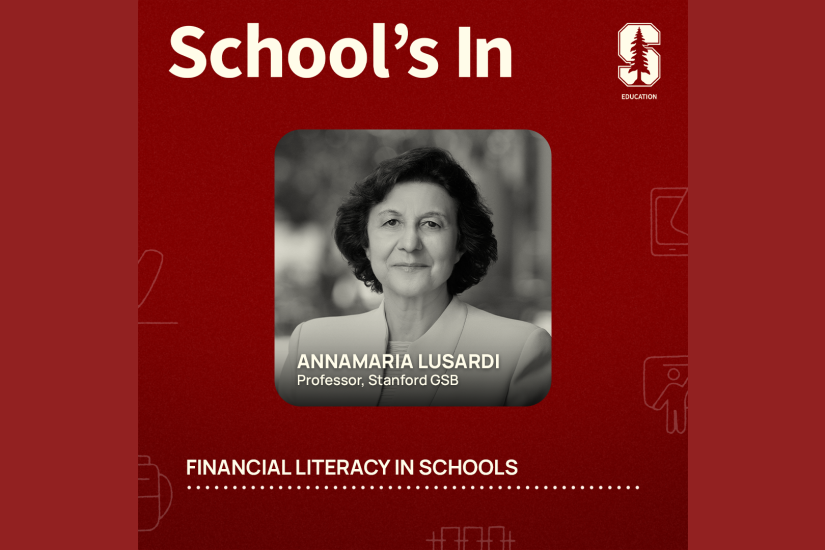
Stanford-developed history lessons for grades 6-12 adopted worldwide
For social studies teacher Loi Laing, the first day of school in 2011-12 was a like a bad dream. Just three weeks earlier, the principal of her Miami, Fla., high school had informed her that she would be teaching 11th grade United States history for the first time. Laing, a business lawyer-turned-teacher, had been comfortable leading classes in government and economics. But in this new role, she felt like one of those New World explorers in her heavy, state-issued textbook: alone at sea, without a landmark in sight.
Laing wasn’t just inexperienced at teaching the subject; she never had taken a U.S. history course in her life. In Jamaica, the British Commonwealth country where she grew up, history was an endless parade of European kings, queens and armies, seen from a decidedly English perspective. And what a boring subject it was! “Just memorizing names and dates” she recalled, shuddering. “I hated that.”
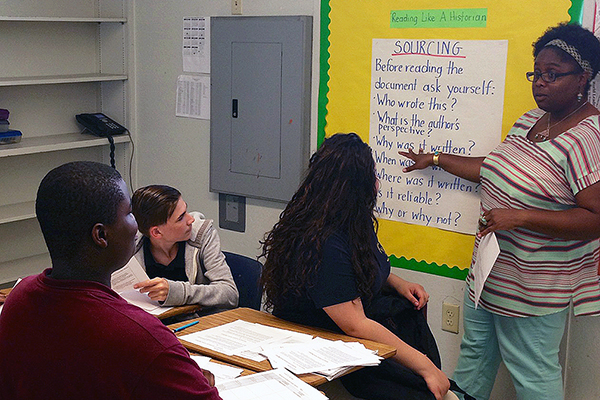
Loi Laing, a social studies teacher in Miami, discovered the ‘Reading Like a Historian’ curriculum while searching the Internet for help. (Photo courtesy of Loi Laing)
With hours of study, Laing managed to stumble through that first year. But she knew she needed to step up her game, particularly after Florida announced plans to implement a high-stakes high school history examination. Searching the internet for help, she came across Reading Like a Historian, an increasingly popular online tool developed by faculty and students at Stanford Graduate School of Education.
Launched in 2009, Reading Like a Historian offers 101 flexible lesson plans that teachers can download and adapt for their own students, free of charge. In each unit, middle- and high schoolers learn how to examine challenging primary and secondary source documents critically — just as historians would — in order to answer intriguing questions about the ancient and modern world: Did slaves build the Great Pyramid at Giza? Why did so many Americans, including many women, oppose women’s suffrage? Was President Truman right to fire General Douglas MacArthur during the Korean War?
Scanning over the stimulating but easy-to-follow lesson plans, Laing felt a wave of relief. “My mind was blown!” she said. “I thought, ‘I can totally work with this.’”
She’s not alone: More than 50,000 teachers, principals, students, district administrators and home-schooling parents are visiting the Stanford website each month now, from 127 countries and all parts of the United States. Total downloads to date: nearly 1.2 million.
While many social studies teachers, like Laing, figure out how to use the materials on their own, others are clamoring for Stanford-led professional development sessions. “It used to be that we’d get maybe one call a month asking for workshops on how to use our materials, but now it’s one call a day,” said Joel Breakstone, the frequent-flying director of the Stanford History Education Group, which runs the site. Clients have included some of America’s largest school districts — New York City, Chicago, Newark, Baltimore and Los Angeles – as well as numerous smaller districts, from Lincoln, Neb., and Vail, Colo., to Carmel, Calif.

Danielle Bagonis, a social studies teacher at Morrell Park Elementary/Middle School in Baltimore, uses the curriculum in her 8th-grade class. (Photo by RaeLynne Snyder)
Common ground with Common Core
Clearly, anxiety over looming state Common Core examinations is driving much of the website’s traffic. As Stanford education professor and project founder Sam Wineburg noted, all of the lesson plans in Reading Like a Historian emphasize informational text analysis and critical thinking — skills that will be essential for passing the new standardized tests. “If the mission of a school is to teach kids to be more critical readers, then what we’re doing gets at that,” he said. “We were doing the Common Core before it was common.”
Reading Like a Historian grew out of research Wineburg started while he was a doctoral student at Stanford in the 1980s. He noticed that while professional historians automatically pause and check the sources of documents before reading them, few students think to do the same. His awarding-winning 2002 book, Historical Thinking and Other Unnatural Acts, suggested that if youngsters really are to “get” history, they must be taught to do three things: 1) look at the source of a document before reading it, 2) figure out the context in which it was written, and 3) cross-check it with other sources before coming to conclusions about it.
To see how the method works in practice, it’s helpful to look at one of Reading Like a Historian’s newer middle-school lessons, on the Great Pyramid at Giza. Using provided Power Point slides, the teacher starts by asking students to write and discuss what they already know about Egyptian pyramids, and offers some background on how, when, where and why the great stone tombs were built. Then comes the Big Question: Who actually constructed them? Were they slaves, as famously depicted in the Book of Exodus and movies like The Ten Commandments? Or were they members of a higher social class, like artisans?
To find out, students are asked to pair up and read five abridged-but-still-challenging primary and secondary source documents, paying careful attention to their sources and contexts. Among them: a letter by the ancient Greek historian Herodotus, an excerpt from a 1959 school textbook, a 2010 Associated Press article, the transcript of a PBS Nova program, and some comments from a Villanova University Egyptologist. The class ends with a group discussion and homework: “Do you think slaves built the Great Pyramid at Giza? Why or why not? Make sure to use evidence from at least two of the documents in this lesson to support your claim.”
On a snowy afternoon in Nashville, Tenn., veteran social studies teacher Heather Ihde leads her 11th graders through a similar lesson plan – this one focused on the women’s suffrage movement. “Why,” she asked the class, “did so many Americans, including many women, oppose passage of the 19th amendment?” The assigned readings — including excerpts from a Tennessee congressman’s speech to the U.S. House of Representatives, and a 1911 anti-suffrage book, The Ladies Battle — spark a lively classroom debate about the roles of women in the home and society.
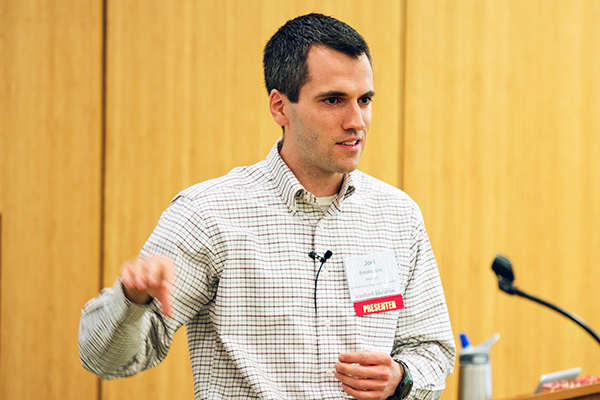
Joel Breakstone, director of the Stanford History Education Group, does professional development sessions for social studies teachers. (Photo by Steve Castillo)
“I used to teach history the way I had been taught; probably lecturing too much,” Ihde said. “This method gets me out of the center and puts students at the center. They’re having to look at the actual documents that built their history textbook and come to conclusions based on the evidence.” In the process, she said, “I’ve really watched my students’ writing improve. Some people are freaking out about the Common Core, but I’m like, ‘Hey, this is no big deal; it’s what I’m doing in my classroom already.’”
Social studies teacher Stephanie Scherbarth, of Big Springs, Neb., feels the same way. “The Reading Like a Historian curriculum has made students that have never uttered a word in my class come alive during some of the structured academic controversies,” she marveled in a recent email to the state education department. “It was an amazing sight!”
An alternative to traditional textbooks
Compared to the larger textbook publishers, Reading Like a Historian is run on a shoestring, with the equivalent of just three full-time staffers: Breakstone, Director of Digital Curriculum Brad Fogo, doctoral student Mark Smith, and Teresa Ortega, ’12. Nevertheless they have ambitious plans, including more professional development for teachers, and more online lessons for world history courses and middle schoolers. They’re also working hard to expand a companion website called Beyond the Bubble, where teachers learn how to evaluate their students — and get immediate feedback on their own performance — using short written tasks called History Assessments of Thinking.
On the technical side, the scholars are working with professional designers to upgrade the Reading Like a Historian website so that it can handle more traffic. (“The designer of our original site was the brother of one of our graduate students,” Wineburg noted.) Longer term, they would love to make Reading Like a Historian lesson plans completely paperless, with exercise sheets that can be filled out on a laptop or tablet computer.
Perhaps their most important goal is to continue research on the effectiveness of Reading Like a Historian. When similar lessons were given a trial run six years ago, in the San Francisco Unified School District, students in the test classes showed an increased ability to retain historical knowledge, as well as a greater appreciation for history. They also showed marked improvements in their reading comprehension and critical thinking — the very skills that the new Common Core curriculum standards are trying to foster. (The findings were published in several peer-reviewed journals, and the papers are available through the research publications page on the website of the Stanford History Education Group.)
Nick Stamoulacatos, social studies coordinator for schools in Syracuse, New York, hopes the same will be true for students in his large urban district. On previous state history tests, Syracuse 11th graders clearly had trouble with the essay parts of the exam. “We were so obsessed with standardized multiple choice testing,” he said, “that it almost took ownership of the curriculum.” Now that 120 of his teachers have been trained to use Reading Like a Historian, he said, the culture is starting to shift.
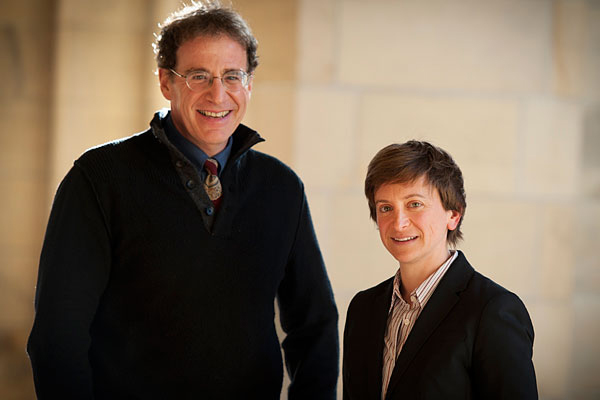
Professor of Education Sam Wineburg, founder of the Stanford History Education Group, worked with Abby Reisman and others to develop the innovative curriculum. (Photo by L.A. Cicero/Stanford News Service)
“Students like these lessons because they’re not just boring lectures, and teachers are excited because it’s a method that can be easily updated and applied to any course,” he said. “We’re definitely going to monitor the data that‘s going to come out when the kids take the next assessment, in June.”
Teachers in Baltimore, Md., likewise are buying in to the program. “The website is awesome,” said RaeLynne Snyder, who oversees social studies curriculum and instruction for the 85,000-student district. “For teachers, finding one good primary source document is a victory. But to have lessons attached — that’s amazing. No teacher is going to turn that down.”
Back in Miami, Loi Laing is working on a different campus now — Lauderdale Lakes Middle School — and her students are younger. But she still uses Reading Like a Historian all the time, most recently for a unit on Federalists versus Anti-Federalists.
“At first,” she recalled, “using Reading Like a Historian was like pulling teeth, because my students were so used to everything being handed to them.”
She knew she was on the right track, though — especially when those first standardized high school history test scores were posted. Out of all the students at her former school who passed the state exam, 85 percent were her kids.
Laing was so inspired that she decided to back to school for a master’s degree. The subject? United States history, of course.
Theresa Johnston, the author of this story, previously wrote about Reading Like a Historian in a cover story for Stanford magazine. The program was also the subject of an article in Stanford Report. For more information on Reading Like a Historian, including a Teaching Channel video, go to http:://sheg.stanford.edu/rlh.
To learn about some of Sam Wineburg's other work, please see this story about his critique of Howard Zinn and this story and video on his lecture, "Learning to Tweet."
